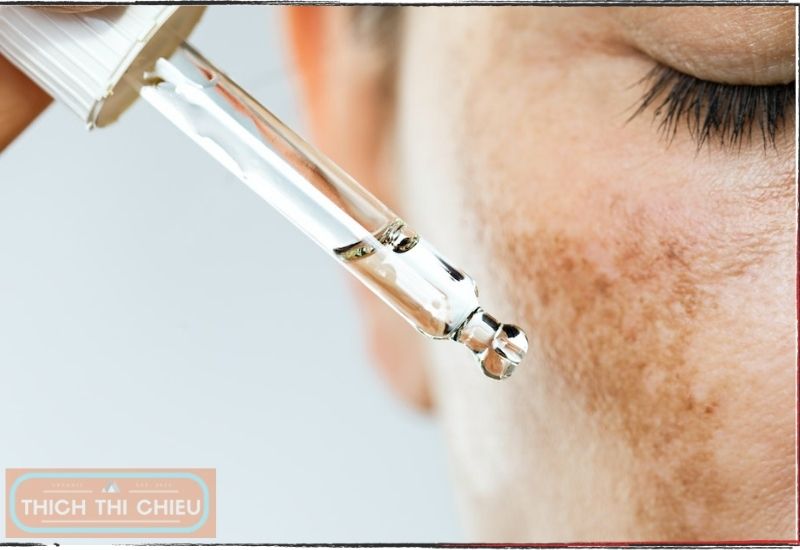Melasma is a common skin condition that causes dark patches or discoloration on the face, usually on the cheeks, forehead, chin, and bridge of the nose. It is more common in women and people with darker skin tones.
The exact cause of melasma is unknown, but it is thought to be caused by a combination of factors, including:
- Sun exposure: Melasma is often triggered by sun exposure, which is why it is more common in people who live in sunny climates.
- Hormones: Melasma can also be triggered by hormonal changes, such as pregnancy, menopause, and taking birth control pills.
- Genetics: Melasma is more common in people with a family history of the condition.
Melasma is not harmful, but it can be cosmetically bothersome. There is no cure for melasma, but there are treatments that can help to lighten the dark patches and prevent the condition from getting worse.
If you have melasma, it is important to see a dermatologist for diagnosis and treatment. There are a variety of treatments available, including topical medications, chemical peels, and laser therapy.
If you are concerned about developing melasma, or if you already have the condition, I recommend reading this article to learn more about how to prevent and treat it.
Symptoms of melasma
The primary symptom of melasma is hyperpigmentation, or the development of dark patches of skin or uneven skin tone. These patches are typically flat and appear darker than an individual’s skin tone, often brown or gray in color.
Melasma can occur on any area of the body that is exposed to the sun, but it is most common on the face. The most common areas affected by melasma are the cheeks, forehead, chin, and bridge of the nose.
Other symptoms of melasma may include:
- Darkening of the skin around the mouth (chloasma)
- Darkening of the skin under the eyes
- Darkening of the skin on the neck and chest
- Darkening of the areolas (the dark area around the nipples)
Melasma can be symmetrical, meaning that it appears on both sides of the face in the same location. It can also be asymmetrical, meaning that it only appears on one side of the face.
The severity of melasma can vary from person to person. Some people may only have a few small dark patches, while others may have larger, more noticeable patches.
Melasma can also worsen or improve over time. For example, it is often more noticeable during the summer months when people are exposed to more sun.
If you notice any of the symptoms of melasma, it is important to see a dermatologist for diagnosis and treatment. A dermatologist can help you to develop a treatment plan to lighten the dark patches and prevent the condition from getting worse.
How to diagnose melasma
To diagnose melasma, a dermatologist will typically perform a physical examination of your skin. They may also use a special light called a Wood’s lamp to examine your skin more closely.
The Wood’s lamp emits ultraviolet light that can cause melasma patches to appear darker. This can help the dermatologist to better see the extent of the condition and to determine the best course of treatment.
In some cases, the dermatologist may also order a biopsy of the affected skin. This is a minor procedure in which a small sample of skin is removed for examination under a microscope.
A biopsy can help to rule out other skin conditions that may be causing the dark patches, such as lentigines (age spots) or melasma-like dermatitis.
Once the dermatologist has diagnosed melasma, they can work with you to develop a treatment plan to lighten the dark patches and prevent the condition from getting worse.
Here are some tips on how to diagnose melasma:
- See a dermatologist for a skin exam.
- Be prepared to discuss your medical history and any medications you are taking.
- Tell the dermatologist about any recent sun exposure.
- Be prepared to answer questions about your skin care routine.
- Let the dermatologist know if you have any other skin conditions.
Treatment for melasma
Treatment for melasma typically focuses on lightening the dark patches and preventing the condition from getting worse. There is no cure for melasma, but there are a number of treatments that can be effective.
The best treatment for melasma will vary depending on the severity of the condition, the individual’s skin type, and other factors.
Some common treatments for melasma include:
- Topical medications: Topical medications are applied directly to the affected skin. Common topical medications used to treat melasma include hydroquinone, azelaic acid, tretinoin, and kojic acid.
- Chemical peels: Chemical peels involve applying a chemical solution to the skin to remove the top layer of dead skin cells. This can help to lighten the dark patches of melasma.
- Laser therapy: Laser therapy uses concentrated beams of light to target the melanin-producing cells in the skin. This can help to lighten the dark patches of melasma and improve the overall appearance of the skin.
How to prevent melasma
While there is no cure for melasma, there are a number of things you can do to prevent it from developing or getting worse. Here are some tips:
- Wear sunscreen every day: Sunscreen is the most important thing you can do to prevent melasma. Choose a broad-spectrum sunscreen with an SPF of 30 or higher and apply it liberally to all exposed skin, including your face, neck, and ears. Reapply sunscreen every two hours, or more often if you are sweating or swimming.
- Avoid the sun during peak hours: The sun’s rays are strongest between 10am and 4pm, so it is best to avoid the sun during this time if possible. If you must be outside during peak hours, be sure to wear sunscreen and protective clothing, such as a hat and sunglasses.
- Seek shade when possible: When you are outdoors, seek shade whenever possible. This could mean sitting under an umbrella or tree, or parking in the shade.
- Wear protective clothing: In addition to sunscreen, you can also protect your skin from the sun by wearing protective clothing, such as a hat, sunglasses, and long sleeves.
- Avoid tanning beds: Tanning beds emit harmful UV rays that can damage your skin and trigger melasma.
- Use gentle skincare products: Some skincare products can irritate the skin and worsen melasma. Choose gentle, fragrance-free skincare products that are non-comedogenic (meaning they won’t clog your pores).
- Manage stress: Stress can trigger melasma in some people. Find healthy ways to manage stress, such as exercise, yoga, or meditation.
If you have any questions or concerns about melasma, please talk to your dermatologist. They can help you to develop a prevention plan that is right for you.
It is important to note that melasma is a harmless condition, but it can be cosmetically bothersome. If you are concerned about the appearance of your skin, please talk to your doctor.
Tips for living with melasma
While there is no cure for melasma, there are a number of things you can do to live with it and manage its appearance. Here are some tips:
- Use a daily sunscreen: Sunscreen is the most important thing you can do to protect your skin from the sun and prevent melasma from getting worse. Choose a broad-spectrum sunscreen with an SPF of 30 or higher and apply it liberally to all exposed skin, including your face, neck, and ears. Reapply sunscreen every two hours, or more often if you are sweating or swimming.
- Wear protective clothing: In addition to sunscreen, you can also protect your skin from the sun by wearing protective clothing, such as a hat, sunglasses, and long sleeves.
- Avoid the sun during peak hours: The sun’s rays are strongest between 10am and 4pm, so it is best to avoid the sun during this time if possible. If you must be outside during peak hours, be sure to wear sunscreen and protective clothing.
- Use gentle skincare products: Some skincare products can irritate the skin and worsen melasma. Choose gentle, fragrance-free skincare products that are non-comedogenic (meaning they won’t clog your pores).
- Manage stress: Stress can trigger melasma in some people. Find healthy ways to manage stress, such as exercise, yoga, or meditation.
- Seek professional treatment: If your melasma is severe or bothers you, there are a number of professional treatments available, such as topical medications, chemical peels, and laser therapy.
Here are some additional tips for living with melasma:
- Be patient: Melasma is a chronic condition, so it is important to be patient with your treatment. It may take several weeks or months to see results.
- Be realistic: Melasma cannot be cured, but there are treatments that can help to lighten the dark patches and prevent the condition from getting worse.
- Don’t be afraid to ask for help: If you are struggling to manage melasma on your own, talk to your dermatologist. They can help you to develop a treatment plan that is right for you.
Melasma can be a challenging condition to live with, but it is important to remember that you are not alone. There are many people who have melasma, and there are a number of resources available to help you manage it.
Home remedies for melasma
Home remedies for melasma are often used to lighten the dark patches and improve the overall appearance of the skin. However, it is important to note that home remedies are not a cure for melasma, and they may not be effective for everyone.
Here are some home remedies for melasma that you may want to try:
- Aloe vera: Aloe vera has anti-inflammatory and anti-oxidant properties that may help to lighten the dark patches of melasma. To use aloe vera for melasma, simply apply a thin layer of fresh aloe vera gel to the affected areas of your skin twice a day.
- Lemon juice: Lemon juice contains citric acid, which can help to exfoliate the skin and lighten the dark patches of melasma. To use lemon juice for melasma, mix equal parts lemon juice and water. Apply the mixture to the affected areas of your skin with a cotton ball and leave it on for 10-15 minutes before rinsing it off with water.
- Turmeric: Turmeric contains curcumin, a compound with anti-inflammatory and antioxidant properties. Curcumin has been shown to be effective in lightening the dark patches of melasma. To use turmeric for melasma, mix one part turmeric powder with two parts water to form a paste. Apply the paste to the affected areas of your skin and leave it on for 15-20 minutes before rinsing it off with water.
- Yogurt: Yogurt contains lactic acid, which can help to exfoliate the skin and lighten the dark patches of melasma. To use yogurt for melasma, apply a thin layer of yogurt to the affected areas of your skin and leave it on for 15-20 minutes before rinsing it off with water.
It is important to note that some home remedies for melasma can irritate the skin, so it is important to do a patch test on a small area of your skin before using any new remedy. If you experience any irritation, discontinue use of the remedy immediately.
It is also important to use sunscreen every day, even when using home remedies for melasma. Sunscreen will help to protect your skin from the sun’s harmful UV rays, which can trigger melasma and make it worse.
Natural treatments for melasma
Natural treatments for melasma are often used to lighten the dark patches and improve the overall appearance of the skin. However, it is important to note that natural treatments are not a cure for melasma, and they may not be effective for everyone.
Here are some natural treatments for melasma that you may want to try:
- Aloe vera: Aloe vera has anti-inflammatory and anti-oxidant properties that may help to lighten the dark patches of melasma. To use aloe vera for melasma, simply apply a thin layer of fresh aloe vera gel to the affected areas of your skin twice a day.
- Turmeric: Turmeric contains curcumin, a compound with anti-inflammatory and antioxidant properties. Curcumin has been shown to be effective in lightening the dark patches of melasma. To use turmeric for melasma, mix one part turmeric powder with two parts water to form a paste. Apply the paste to the affected areas of your skin and leave it on for 15-20 minutes before rinsing it off with water.
- Licorice root: Licorice root contains glabridin, a compound with anti-inflammatory and skin-lightening properties. Glabridin has been shown to be effective in lightening the dark patches of melasma. To use licorice root for melasma, look for a topical product that contains glabridin.
- Niacinamide: Niacinamide is a form of vitamin B3 that has been shown to be effective in lightening the dark patches of melasma. To use niacinamide for melasma, look for a topical product that contains niacinamide.
- Kojic acid: Kojic acid is a natural compound that has been shown to be effective in lightening the dark patches of melasma. To use kojic acid for melasma, look for a topical product that contains kojic acid.
It is important to note that some natural treatments for melasma can irritate the skin, so it is important to do a patch test on a small area of your skin before using any new treatment. If you experience any irritation, discontinue use of the treatment immediately.
Conclusion
Melasma is a common skin condition that can cause dark patches or discoloration on the face, usually on the cheeks, forehead, chin, and bridge of the nose. It is more common in women and people with darker skin tones.
While there is no cure for melasma, there are a number of things you can do to prevent it from developing or getting worse. The most important thing you can do is to protect your skin from the sun by wearing sunscreen every day and avoiding the sun during peak hours. You can also wear protective clothing, such as a hat and sunglasses, and seek shade when possible.
In addition to prevention, there are a number of treatments available for melasma, such as topical medications, chemical peels, and laser therapy. If you have melasma, it is important to see a dermatologist to discuss the best treatment options for you.
Here are some additional tips for living with melasma:
- Be patient. Melasma is a chronic condition, so it is important to be patient with your treatment. It may take several weeks or months to see results.
- Be realistic. Melasma cannot be cured, but there are treatments that can help to lighten the dark patches and prevent the condition from getting worse.
- Don’t be afraid to ask for help. If you are struggling to manage melasma on your own, talk to your dermatologist. They can help you to develop a treatment plan that is right for you.
Melasma can be a challenging condition to live with, but it is important to remember that you are not alone. There are many people who have melasma, and there are a number of resources available to help you manage it.






Leave a Reply